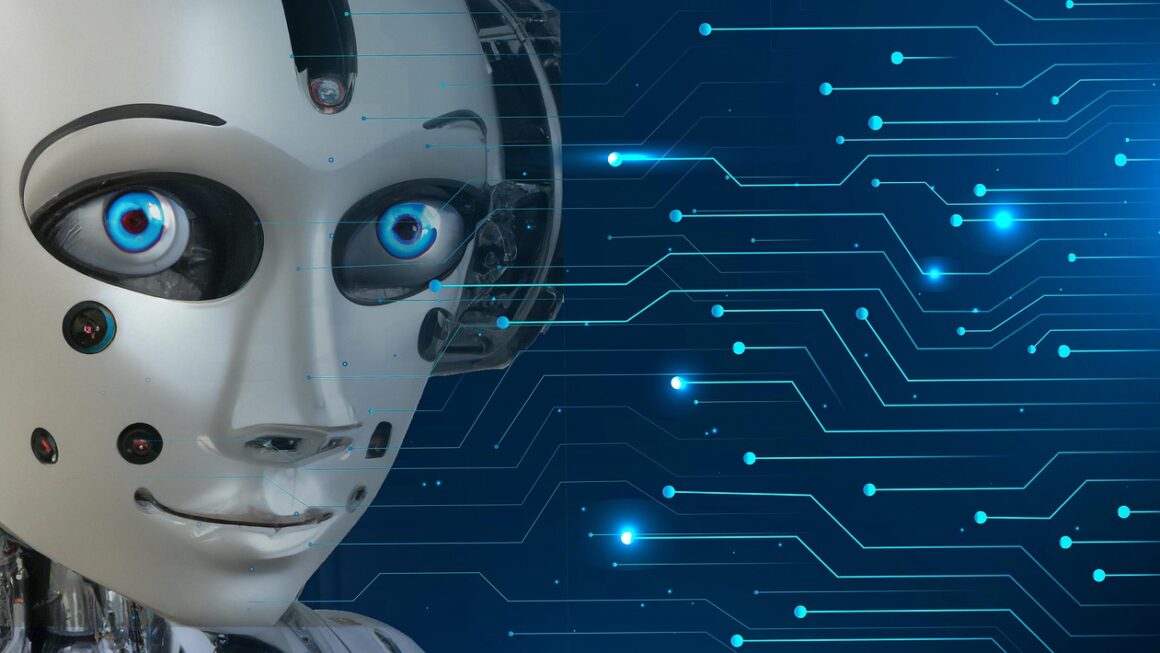Neural networks, at first glance, might seem like complex algorithms reserved for seasoned data scientists. However, these powerful tools are increasingly woven into the fabric of our daily lives, from suggesting what to watch next on streaming services to powering advanced medical diagnostics. This blog post aims to demystify neural networks, exploring their fundamentals, applications, and the impact they’re having on various industries. We’ll break down the jargon and provide clear explanations to help you understand the core concepts driving this transformative technology.
What are Neural Networks?
Neural networks are a subset of machine learning, inspired by the structure and function of the human brain. They’re designed to recognize patterns, learn from data, and make predictions. At their core, neural networks consist of interconnected nodes called “neurons” organized in layers.
The Basic Building Blocks: Neurons, Layers, and Weights
- Neurons (Nodes): Each neuron receives inputs, performs a calculation, and produces an output. Think of it like a tiny decision-making unit.
- Layers: Neurons are organized into layers:
Input Layer: Receives the initial data.
Hidden Layers: Perform complex calculations and feature extraction. A neural network can have multiple hidden layers, allowing it to learn increasingly complex patterns.
Output Layer: Produces the final prediction or classification.
- Weights: Connections between neurons have associated “weights.” These weights determine the strength of the connection and are adjusted during the learning process. Higher weights mean a stronger influence on the next neuron.
- Biases: Each neuron also has a “bias,” which is added to the weighted sum of the inputs. The bias helps the neuron activate even when the inputs are small.
- Activation Functions: These functions determine whether a neuron “fires” (i.e., passes on its output). Common activation functions include ReLU (Rectified Linear Unit), Sigmoid, and Tanh.
How Neural Networks Learn: Training and Backpropagation
The process of “training” a neural network involves feeding it data and adjusting the weights and biases to improve its accuracy. This is often done using a technique called “backpropagation.”
- Forward Propagation: Input data is fed through the network, layer by layer, until it reaches the output layer. The network produces a prediction.
- Loss Function: The prediction is compared to the actual value (the “ground truth”) using a “loss function,” which quantifies the error. For example, mean squared error is commonly used for regression tasks.
- Backpropagation: The error is propagated backward through the network, and the weights and biases are adjusted to reduce the error. This adjustment is guided by the gradient of the loss function.
- Optimization Algorithms: Algorithms like gradient descent are used to find the optimal weights and biases that minimize the loss function.
- Example: Imagine training a neural network to recognize images of cats. You would feed it many images of cats and tell it, “This is a cat.” The network would adjust its weights and biases until it could accurately classify cat images. The more data the network sees, the better it becomes at recognizing cats.
Types of Neural Networks
Different types of neural networks are designed for specific tasks.
Feedforward Neural Networks (FNNs)
- The simplest type of neural network.
- Data flows in one direction, from input to output.
- Suitable for tasks like classification and regression where the input is independent of previous inputs.
- Example: Predicting house prices based on features like size, location, and number of bedrooms.
Convolutional Neural Networks (CNNs)
- Specifically designed for processing images and videos.
- Utilize convolutional layers to automatically learn features from the input data.
- Example: Image recognition, object detection (identifying and locating objects in an image), and image segmentation.
- Key Features:
Convolutional Layers: Apply filters to the input data to detect features.
Pooling Layers: Reduce the dimensionality of the data, making the network more efficient.
Recurrent Neural Networks (RNNs)
- Designed for processing sequential data, where the order of the data matters.
- Have feedback loops that allow them to maintain a “memory” of past inputs.
- Example: Natural language processing (NLP), speech recognition, and time series forecasting.
- Variations:
Long Short-Term Memory (LSTM): A type of RNN that is better at handling long-range dependencies in the data.
Gated Recurrent Unit (GRU): Another type of RNN that is similar to LSTM but simpler.
Generative Adversarial Networks (GANs)
- Consist of two neural networks: a generator and a discriminator.
- The generator creates new data samples, and the discriminator tries to distinguish between real data and the generator’s output.
- Example: Image generation, style transfer, and data augmentation.
- How They Work: The generator and discriminator are trained in an adversarial manner, with the generator trying to fool the discriminator and the discriminator trying to catch the generator.
Applications of Neural Networks
Neural networks are transforming industries across the board. Here’s a glimpse:
Healthcare
- Medical Diagnosis: Assisting doctors in diagnosing diseases from medical images (e.g., X-rays, MRIs). Studies have shown that neural networks can achieve accuracy comparable to or even exceeding that of human experts in certain diagnostic tasks.
- Drug Discovery: Accelerating the drug discovery process by predicting the efficacy and toxicity of potential drug candidates.
- Personalized Medicine: Tailoring treatment plans to individual patients based on their genetic makeup and medical history.
Finance
- Fraud Detection: Identifying fraudulent transactions in real-time. Neural networks can analyze vast amounts of transaction data and detect patterns that are indicative of fraud.
- Algorithmic Trading: Developing trading strategies that can automatically buy and sell stocks based on market conditions.
- Risk Assessment: Assessing the creditworthiness of borrowers.
Autonomous Vehicles
- Object Detection: Identifying objects in the vehicle’s surroundings, such as pedestrians, cars, and traffic signs.
- Lane Keeping: Keeping the vehicle within its lane.
- Path Planning: Planning the optimal route for the vehicle.
Natural Language Processing (NLP)
- Machine Translation: Translating text from one language to another.
- Chatbots: Building conversational AI systems that can interact with humans.
- Sentiment Analysis: Determining the emotional tone of text.
- *Statistic: A report by McKinsey estimates that AI, including neural networks, could contribute $13 trillion to the global economy by 2030.
Challenges and Future Directions
Despite their potential, neural networks also face challenges:
Data Requirements
- Neural networks typically require large amounts of data to train effectively.
- Data quality is also crucial. Biased or incomplete data can lead to inaccurate predictions.
Explainability
- Neural networks can be “black boxes,” making it difficult to understand why they make certain predictions.
- This lack of explainability can be a barrier to adoption in certain applications, such as healthcare.
Computational Cost
- Training large neural networks can be computationally expensive.
- This requires specialized hardware, such as GPUs.
Future Directions:
- Explainable AI (XAI): Developing techniques to make neural networks more transparent and interpretable.
- Federated Learning: Training neural networks on decentralized data sources, without requiring the data to be stored in a central location.
- Neuromorphic Computing: Building computers that are inspired by the structure and function of the human brain.
Conclusion
Neural networks are a powerful and rapidly evolving technology with the potential to transform numerous industries. While challenges remain, ongoing research and development are paving the way for even more sophisticated and impactful applications in the future. Understanding the fundamentals of neural networks is becoming increasingly important for professionals in various fields, and this introduction provides a solid foundation for further exploration. The ability to leverage the power of neural networks will undoubtedly be a key differentiator in the years to come.




